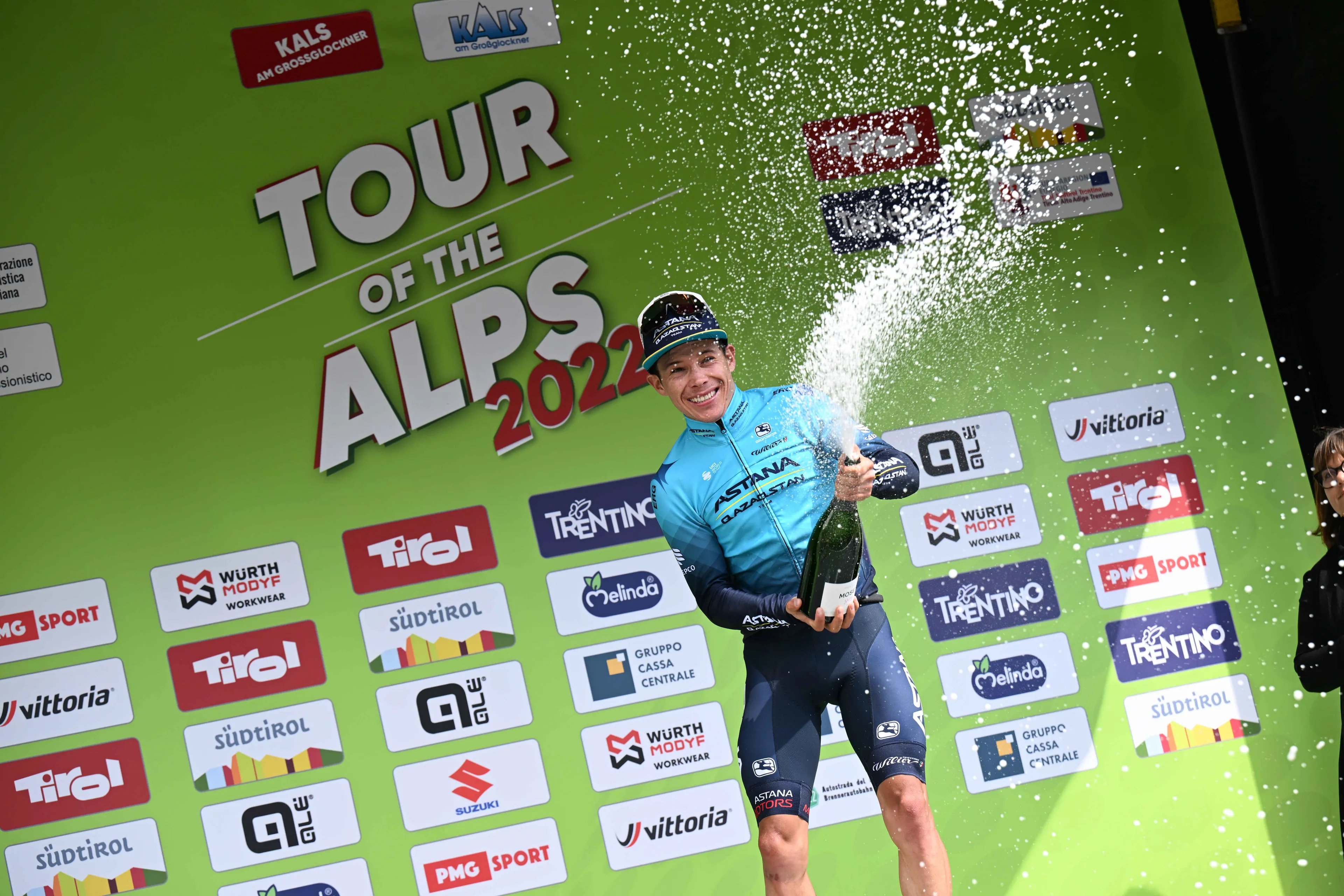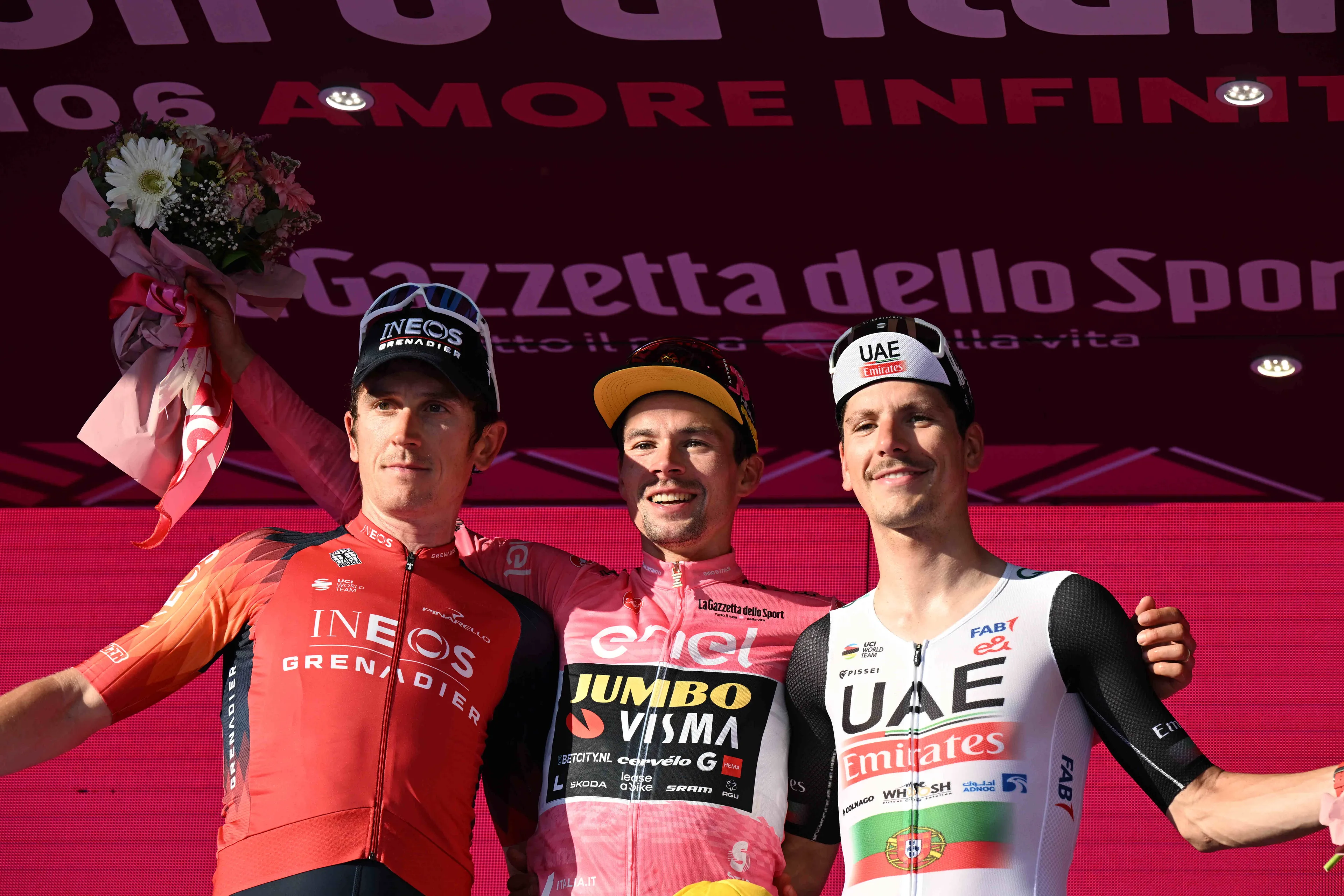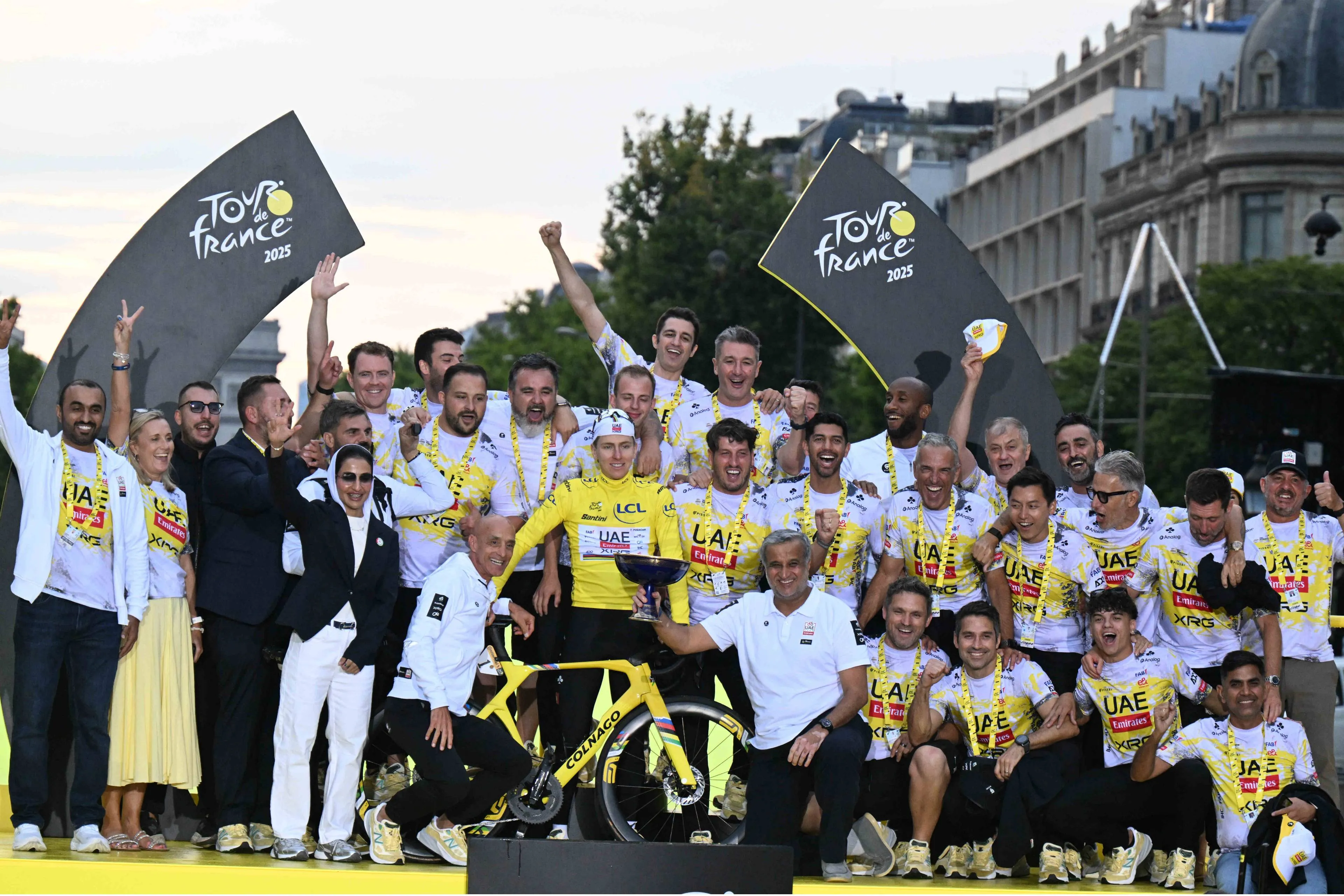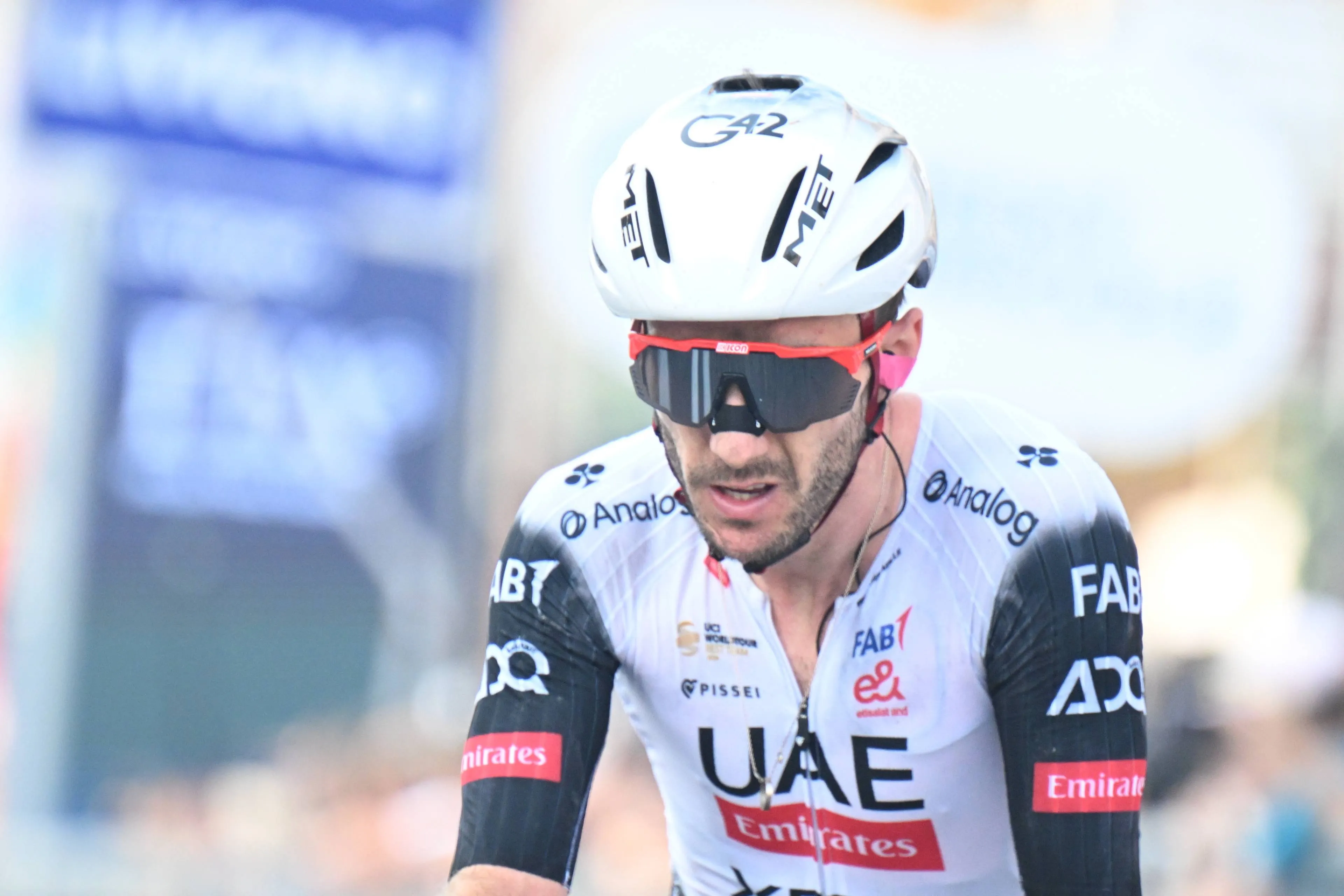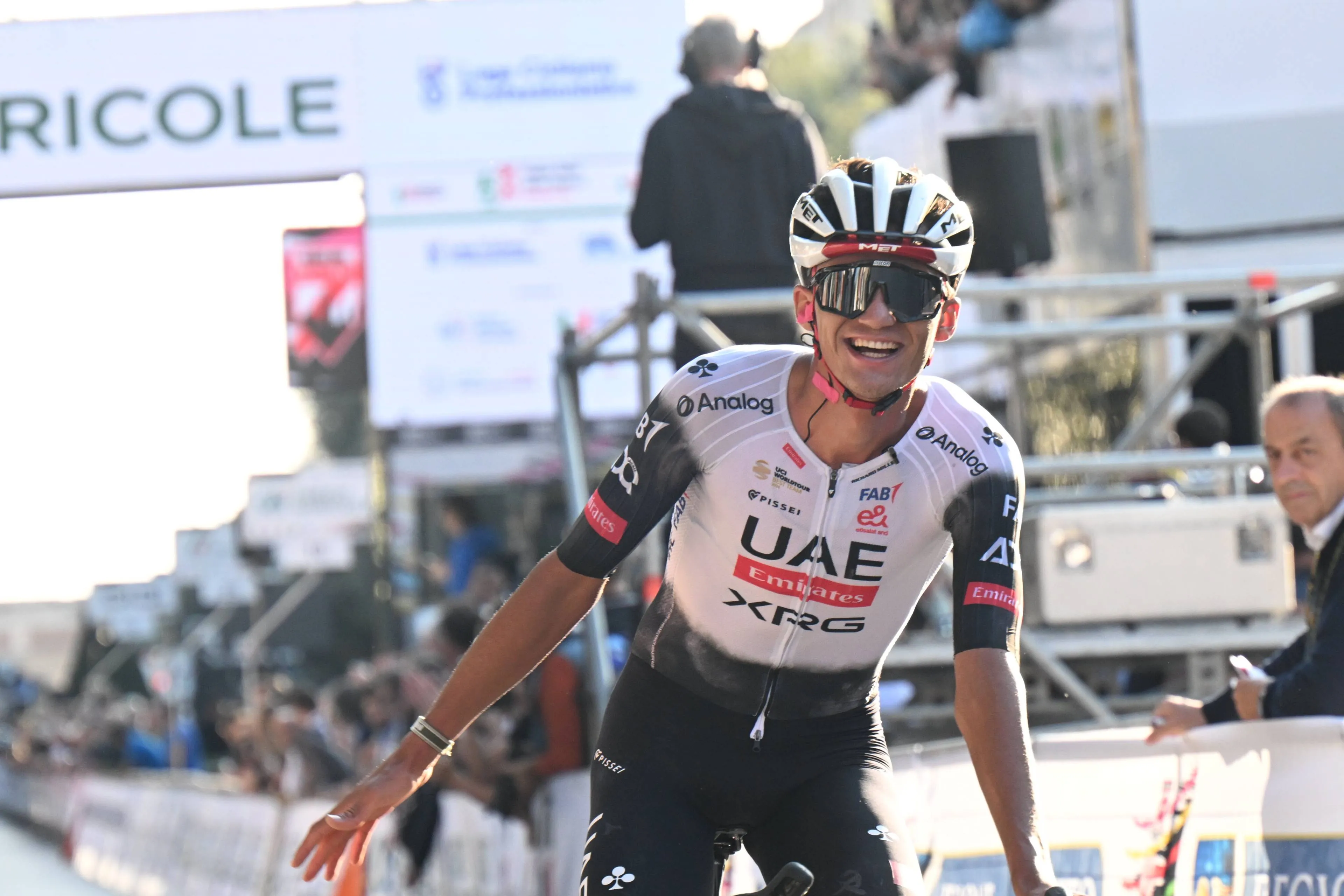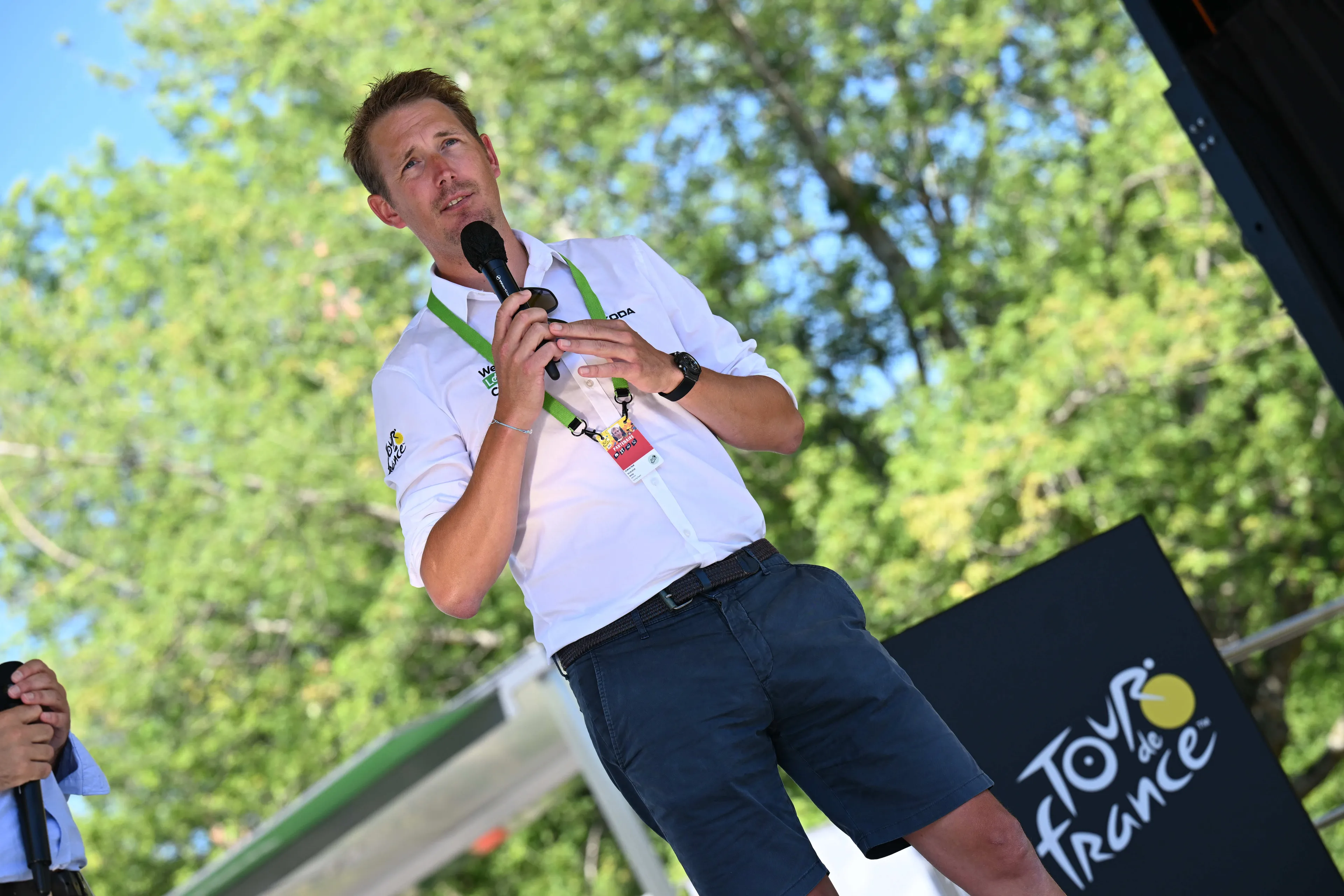
The Giro d'Italia had it's Grande Partenza abroad this year, distant from it's borders as the peloton headed to Hungary for three different stages, with very different outcomes. Mathieu van der Poel won the punchy summit finish on the opening day, and maintained the lead as Simon Yates stormed to a surprise win in the time-trial on day two. Mark Cavendish won the bunch sprint on the third stage, however there is more to take from these three days of racing...
Read also
#1 - Mathieu van der Poel is not the absolute leader of Alpecin-Fenix
It was clear from early on that Alpecin-Fenix had the goal of taking Mathieu van der Poel to the pink jersey on the opening day, as the team was the first to pick up the responsability of the chase in the peloton. The Dutchman was the overwhelming favourite for the opening stage, and confirmed his status by taking the win in the final reduced bunch sprint.
He's kept it the following day, but the third day of racing revealed the team have other ambitions besides supporting him. As Tim Merlier was forced to miss the race due to an elbow injury sustained at Paris-Roubaix, the sprinter role has been filled by Jakub Mareczko. The Italian sprinter is a new addition to the team this year, however evidently he has a lot of trust as the team - and van der Poel himself - led him out to the finale, where he finished fifth.
Despite having a big lead in the points classification, van der Poel chose not to contest the sprint, hence taking a blow to his ambitions in the classification. It seems as if the team is not looking to protect that lead, and will instead eye both riders in their respective suiting stages.

Mathieu van der Poel and Jakub Mareczko at the start of stage three
#2 - Rick Zabel proves that simple tactics are often the most effective
Looking at the initial startlist, not many would've foreseen Rick Zabel to be one of the headliners of the Giro d'Italia so far. The German sprinter, part of Israel - Premier Tech's leadout for Giacomo Nizzolo, has taken on his own goals and will be arriving in Italy with the climber's jersey on his body.
In what was a very simple tactic, Zabel opted to take the first section of the stage two time-trial easy, in order to fight for the points available at the hilltop finish for the fastest ascent to the line. In the exact same way as he did in 2020, the points he earned by being the fastest in the small categorized ascents in the initial time-trials have gotten him in the KOM jersey. An incredibly effective method, as it cost him no more effort than other riders who had their own goals to ride a fast time.
On the third stage, after going on the attack in a 4th category ascent with 12 kilometers to go, he built up the advantage he needed at the end of the day to travel to the podium.
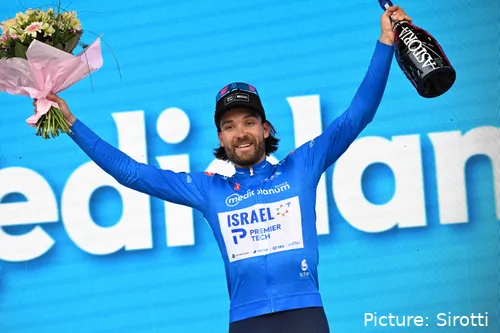
Rick Zabel on the podium after the third stage of the Giro d'Italia
#3 - Despite being short, the 9.2-kilometer time-trial will dictate how the GC is played for a week
Just barely outside the definition of a prologue, the individual effort the riders undergone in Budapest was very short and technical, however it nevertheless created meaningful difference for riders who were not on a good day. Looking at the top riders, the differences are quite shallow, but when we take a look at the bottom of the stage classification we are able to verify some victims of the race against the clock.
Read also
Emanuel Buchmann crashed and lost 57 seconds to Simon Yates, however Miguel Ángel López - one of the main contenders for the race win - has lost 42 seconds with a clean run. Giulio Ciccone and Iván Sosa were also victims, with 50 seconds and 1:23 minutes lost respectively. In the bigger picture, it won't be crucial, however it has automatically put these four riders in a position where they are more prone to attack on the opening week.
Stages four [to Mount Etna] and seven [to Potenza] hence become more likely to be the scene of aggressive racing, due to the time that Simon Yates has put on them back in Budapest.
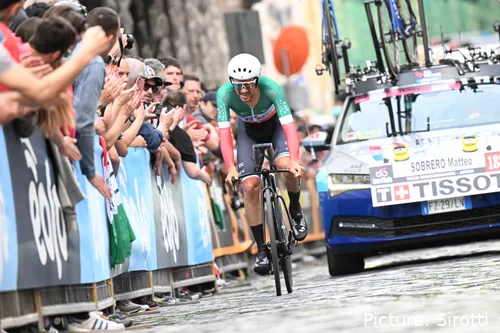
Matteo Sobrero on his way to finish 4th on stage two
#4 - Drone Hopper - Androni Giocattoli are the most combative team in the race
It is traditional for the national Pro Teams to be heavily represented in breakaways throughout all Grand Tours - with no exception. At the start of this year's Giro d'Italia, three teams struck out as clear contenders to be filling this role: Drone Hopper - Androni Giocattoli; Bardiani - CSF - Faizanè and EOLO-Kometa. However, when the flag was waved in the first kilometers of the race, only two riders of the same team dared to lead the day for it's grand majority.
Mattia Bais and Filippo Tagliani (Drone Hopper - Androni Giocattoli) had several hours of free sponsor exposure for their team, in what is arguably the most important race of any of these teams' seasons. Both other teams, despite having little chances of fighting for both stage win and overall classification, have opted to miss out on an easy opportunity - as there was not a single minute of reaction in the peloton regarding the attack.
On stage three, the duo once again attacked, bringing in exposure, alongside points for the intermediate sprint classification, the total breakaway kilometers and the combative prize - each one with their own prize money and trip to the podium at some point in the race. They were joined by EOLO-Kometa's Samuele Rivi, however Bardiani have remained absent from the moves, in an enigmatic choice of tactics.
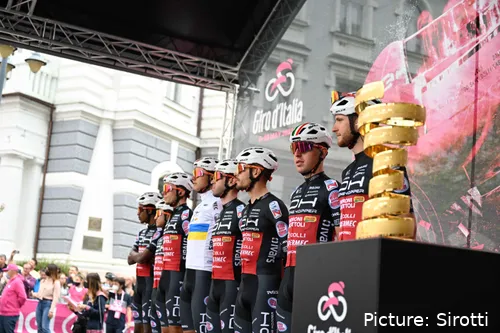
Drone Hopper - Androni Giocatolli at the start of stage three in Kaposvár
#5 - In a race decided by minutes, the GC contenders battle for every second
Perhaps a no brainer, but every effort will matter in the end of three weeks. Whilst the scenes of last year - where Egan Bernal and Remco Evenepoel wildly sprinted for a few seconds in the opening week - did not repeat, the opening day immediately saw the GC riders on their toes and creating little splits between them. Pello Bilbao was the biggest winner on the day, taking four seconds on the road and six in bonus seconds to most of the competition.
However, Wilco Kelderman and Richard Carapaz also went all-out in the sprint to Visegrád, which has seen him gain those almost invisible four seconds which can be lost in the matter of a minute when the high-mountain stages come. Psychology is very important in cycling, and many riders are willing to go all-out to make sure they are never on the back foot, however it is crucial for the riders to be able to manage three weeks of intense pressure.
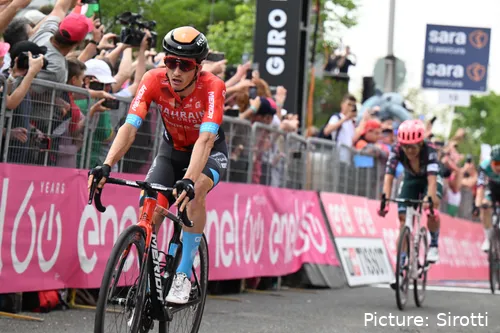
Pello Bilbao continued his run of form with a third place on stage one, the best out of the GC contenders
claps 0visitors 0
Just in
Popular news
Latest comments
- These whiners simply want to keep their hold in the highest echelons of the sport without having to perform well enough to please their sponsors and remain there. Cycling has been "unsustainable" ...for 130 years! If Vaughters wants to leave the sport, there will be hundreds of teams happy to ride the Tour and the biggest races in the world in his place. That's what happens when there's a ton of supply of teams and a limited amount of demand for teams at the highest level! -An Economistacem8219-12-2025
- If she was Dutch or Belgian she'd have already sorted a team out. Unfortunately, the CX teams are pretty insular to 'foreigners' and would rather give a spot to a local rider. And that is one reason why the sport is niche outside its heartland.wipperman9519-12-2025
- Dear Editor: It is no humiliation to make the final, even with two riders, and not get it perfect against another talented rider. Disappointment, sure.itsent18-12-2025
- I luv this guy ,so honest puts the hand up ..."my fault.".. I would be stoked to see him win his big monuments ... i think he would be a great team mate and friend.Davide18-12-2025
- In his years in the peloton, Evenepoel has had several major crashes that could have ended another person's career. In that, he is sadly similar to Roglic, whose crashes have had a huge impact on his still impressive palmares. I'd say the first thing that needs to happen is that everyone make it to the Tour safely. At that point? I don't think they stand a chance against the UAE engine, and the man who is only now (seriously?!) coming into what used to be the age of maturity, refinement, and full bodily development.RidesHills18-12-2025
- It must be hard for him to let go...somewhere in his mind he sees himself competitive. The reality of his entire time at IPT tells a different story altogether.Crashjames18-12-2025
- Not only that, but aside from JV, no one has remotely come close to Tadej level, and I seriously doubt Remco or Lipowitz will be there next year in the finales. That said, a lot can happen on the road in the next year, and I hope it's an epic battle among all of the top 10 finishers. It's a little anticlimactic to watch Tadej ride everyone off his wheel, even if it is super impressive to watch.Crashjames18-12-2025
- He couldn't finish in the top 100 at Unbound Gravel. He might be able to hold the wheel in a cat 3 crit but even that's debatable. Not being facetious.paule18-12-2025
- It isn't just the 5 million euros a year. It's also the never-ending hospital bills. Two weeks to go for Sylvan Adams to get out from under this mess.paule18-12-2025
- LOL, Del Toro, while very strong, is not currently racing at a level higher than Remco or Lipowitz. He can be by 2027 though and probably will be. You are discounting Remco's season this year, which his underperformance was caused by a crash that would have retired most people. He will be very strong this coming year as long as he keeps the rubber side down.awp18-12-2025
Loading
Write a comment
